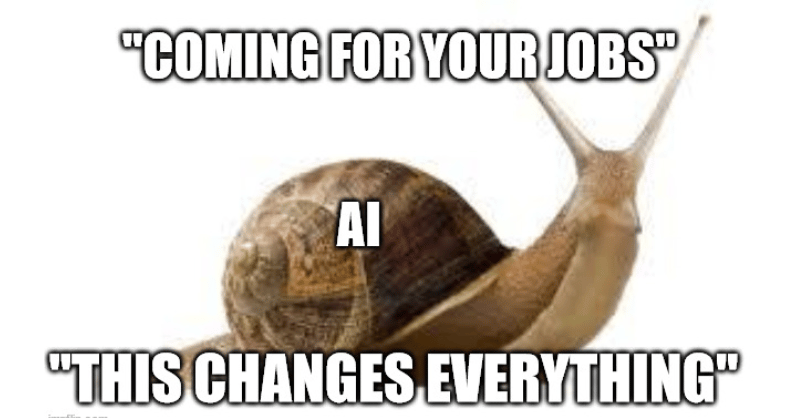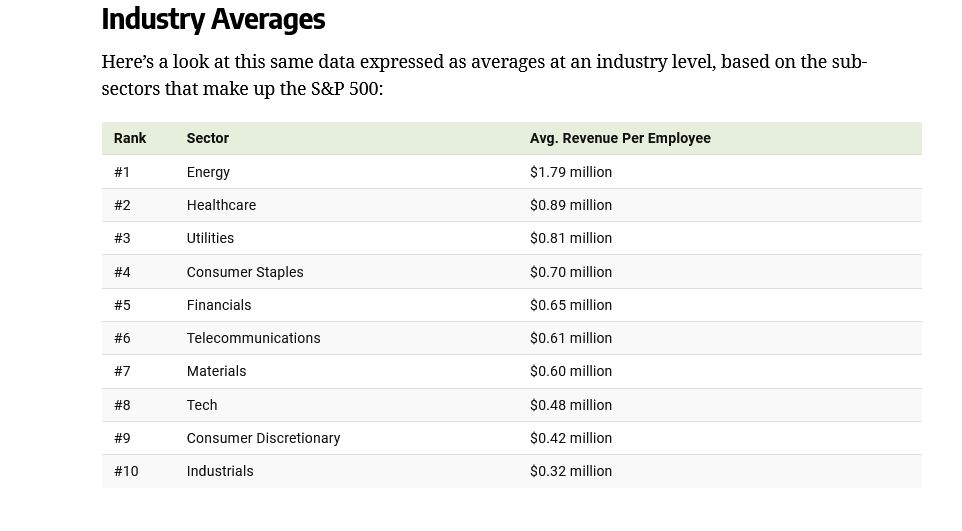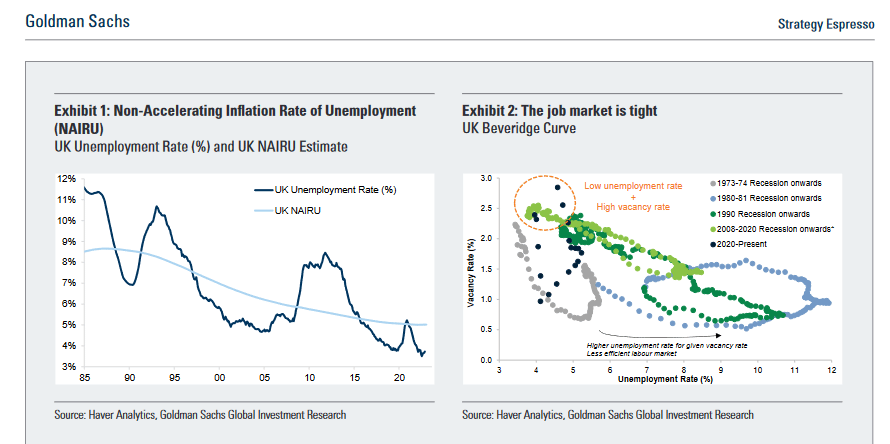- Fink 🧠
- Posts
- 💵 AI Changes Everything & Nothing
💵 AI Changes Everything & Nothing

In partnership with Utrust, the only crypto payments gateway your business needs 👇
Times of change, but the goal remains the same: fairness and freedom.
How different would the world be if everyone was aware of this? #utrustxMoney #xMoney #MultiversX #cryptopayments #crypto #Web3 pic.twitter.com/theAxx1PDl— Utrust (🔜 xMoney) (@UTRUST) April 14, 2023
Last week Tim and I exchanged a few messages about the real world benefits of AI and automation away from the likes of Nvidia and Microsoft. Specifically what benefits (if any) the new technology might deliver to companies with a high headcount.
That question was music to my ears because I have been writing about the future of employment and the role of automation for something like 8 years. Ever since I read this paper by Carl Benedikt Frey & Michael Osborne of the Oxford Martin School (a think tank based at Oxford University).
The paper sets out the susceptibility of job roles to automation and found that 47% of jobs in the US economy were in danger of being replaced by robots of one form or another.
It also finds that wages and educational attainment exhibit a strong negative relationship with an occupation’s probability of computerisation.
Ten years on from the publication of the paper and those dire predictions haven't been realised. Indeed, employment rates in the US and UK are at multi-decade highs. Though that is not the case in every developed economy nor across every age cohort...

Change is undoubtedly coming to the workplace but that’s been a continuous process for many industries over the last three decades. The shift towards services and away from manufacturing, much of which was offshored to low-cost destinations is an important part of the picture.
The nature of work or facets of it was reinvented to some extent under Covid lockdowns and working from home. The ability of many organisations to switch seamlessly from being centralised organisations to ones whose workforces worked remotely surprised many of us, and didn't seem to damage productivity, at least in service industries with an online presence.
AI may make us more us more productive in the workplace or replace us completely depending on who you talk to...
I'd like to think that the reality lies somewhere between those two outliers. With that in mind let's look at who might benefit from the deployment of AI over the medium term.
So what better place to start than with a list generated by an AI?
In this case, Google Bard which, I asked to list the 20 S&P 500 stocks with the highest headcount.
Here is the list of the top 20 S&P 500 stocks based on the number of employees:
Rank | Company | Number of Employees |
------ | -------- | -------- |
1 | Walmart | 2.3 million |
2 | Amazon | 1.6 million |
3 | United Parcel Service | 575,000 |
4 | Lowe's | 340,000 |
5 | Walgreens Boots Alliance | 250,000 |
6 | PepsiCo | 230,000 |
7 | HCA Healthcare | 220,000 |
8 | JPMorgan Chase | 220,000 |
9 | Citigroup | 210,000 |
10 | Dollar Tree | 200,000 |
11 | Kroger | 469,000 |
12 | Home Depot | 400,000 |
13 | AT&T | 270,000 |
14 | Comcast | 250,000 |
15 | Target | 350,000 |
16 | Exxon Mobil | 76,000 |
17 | Chevron | 65,000 |
18 | Wells Fargo | 260,000 |
19 | Berkshire Hathaway | 398,000 |
20 | Intel | 109,000 |
As we can see the list includes many retail names, but there are also several large financial services businesses, a telecoms company, oil majors and a chip manufacturer.
Now let's look at the revenue per employee by sector in the S&P 500.

A quick cross-reference between our two lists shows that a high headcount is not necessarily an impediment to a high average revenue per employee.
Which probably says more about oil prices, value chains, and volumes in the case of Consumer Staples and Utilities.

Visual Cap
We aren’t the only ones pondering these issues. Deutsche Bank is too

A second slide from Deutsche Bank’s' note assesses the relationship between high staff levels and profitability. As the comments below set out, a high headcount tends to weigh on profits and exposes a business to heightened labour risks.

Deutsche's analysts draw an interesting conclusion which is not out of line with my thoughts when they say:
“it is easy to argue that AI can help high-labour firms by finding efficiencies that end people’s jobs. We do not believe this will be the case in anything beyond niche situations.
Rather, we can see a world where AI works with people to cut out mundane parts of their job, allows them to be more productive and levels up their skill sets”
Earlier in the year Goldman Sachs highlighted labour costs in both UK and European companies in separate notes from its portfolio research team, who highlighted the tight labour market in the UK which was preventing employers from filling existing vacancies let alone expanding.

Goldman explained this by highlighting an ageing UK population and changes in migration patterns, with a high number of overseas students coming to the UK but fewer foreign workers. The wrong sort of immigration if you like, for employers.

AI could provide some relief for employers who are struggling to recruit through changes to workflow. Perhaps freeing up current staff from mundane low-productivity tasks and making them available to complete more productive and profitable tasks with the assistance of AI.
As an investor or trader, It would be great to think that the likes of Walmart could suddenly cut their headcount by 20%. But the truth is that large-scale grocery businesses are already some of the most efficient in the world.
Simply because their margins are so small and they rely on high volume. There is little room for error inefficiency and additional costs.
It seems more likely to me that we will see AI delivering an ongoing series of marginal changes at high-headcount firms, rather than decimating the workforce in a fell swoop.
That despite BT’s claim that it would replace 10,000 jobs with AI as part of a proposed headcount reduction of 55,000 by 2030.
Many of those job cuts will likely come as a result of natural wastage, reducing recruitment, not replacing leavers and retirees, voluntary redundancy, early retirement and the like.
Smaller more productive workforces will likely evolve thanks to the deployment of AI, but to my mind, the biggest changes could come at small and medium size businesses and even marginally profitable side hustles, which suddenly become viable thanks to AI-driven productivity and cost reductions.